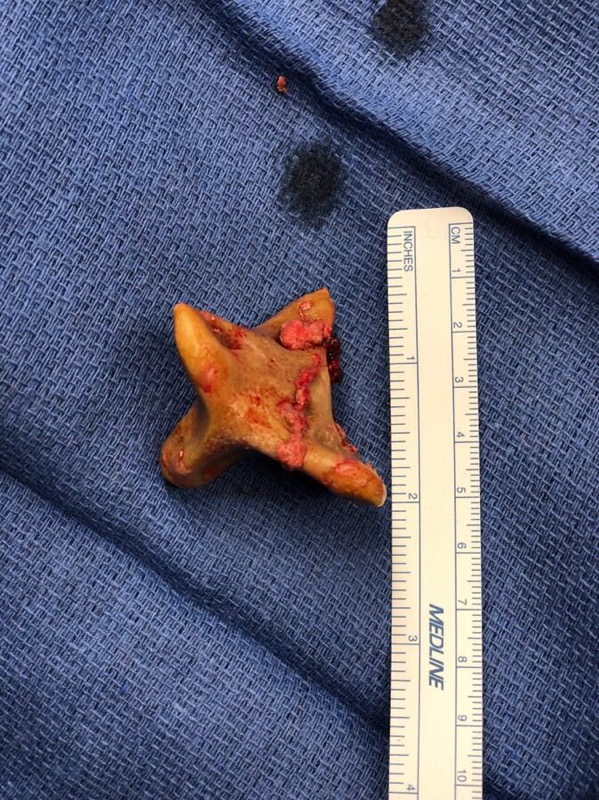GelPOINT Mini Use to Minimize Incisions without Reducing Working Ports
Spencer Larkin, MD, Jacqueline Morin, MD, Ali Ziada, MD, Amanda Saltzman, MD.
University of Kentucky, Lexington, KY, USA.
BACKGROUND: Robotic surgery in pediatrics is limited by trocar size and reduced working space. HiDES has been suggested to improve cosmesis without compromising working ports. Sometimes however, additional ports are necessary for complex cases, such as pyelolithotomy with a large stone burden, requiring both robotic assistance and flexible renoscopy. Herein we describe a case using the GelPOINT Mini to allow 3 trocar access through a single 3cm umbilical incision for a combined pyelolithotomy and pyeloplasty.
METHODS: An otherwise healthy 15-year-old female presented with recurrent dysuria and intermittent left flank pain. She was found to have severe left hydronephrosis and large stone burden (>5cm). Renal function was normal. DMSA scan showed 52/48% right/left renal function. Treatment options were discussed with the patient and family who elected to proceed with robotic pyelolithotomy and concurrent dismembered pyeloplasty.
RESULTS: The patient was taken to the operative suite and positioned in modified flank position with slight frog-legging for urethral access. Cystoscopy was without abnormality and a 10/12Fr ureteral access sheath was left in place for possible retrograde ureteroscope use. A Veress needle in the upper midline was used to gain access into the abdominal cavity. 1 additional robotic trocar was placed in the lower midline. A GelPOINT Mini Advanced Access Platform was then placed via a 3cm umbilical incision. The GelPOINT contained an 8mm robotic trocar, a 12mm assistant port for immediate stone collection in a specimen bag and another 8mm port for flexible cystoscope passage.
The da Vinci XI robot was docked. Robotic dissection was performed to gain access to the renal pelvis. The UPJ had a high insertion and was obviously narrowed. A long longitudinal pyelotomy was made sharply to expose the calyces. A fenestrated bipolar and tip up were then used to remove all stones and place them directly into the specimen bag. Flexible renoscopy was performed with access through the GelPOINT to ensure clearance of stones. A 5Fr by 24cm JJ stent was deployed and robotic pyeloplasty completed with 5-0 Biosyn suture in a running fashion.
The patient did well post-operatively and was discharged home the following day. Her stent was removed at home 2 weeks later. Her flank pain and dysuria have resolved.
CONCLUSIONS: Massive stone burden in conjunction with UPJ obstruction can be difficult to manage but is ideally approached in a minimally invasive manner. The GelPOINT Mini Advanced Access Platform allowed accommodation of several instruments through a single 3cm umbilical incision allowing the use of multiple instruments without additional incisions. 
Back to 2019 Abstracts




